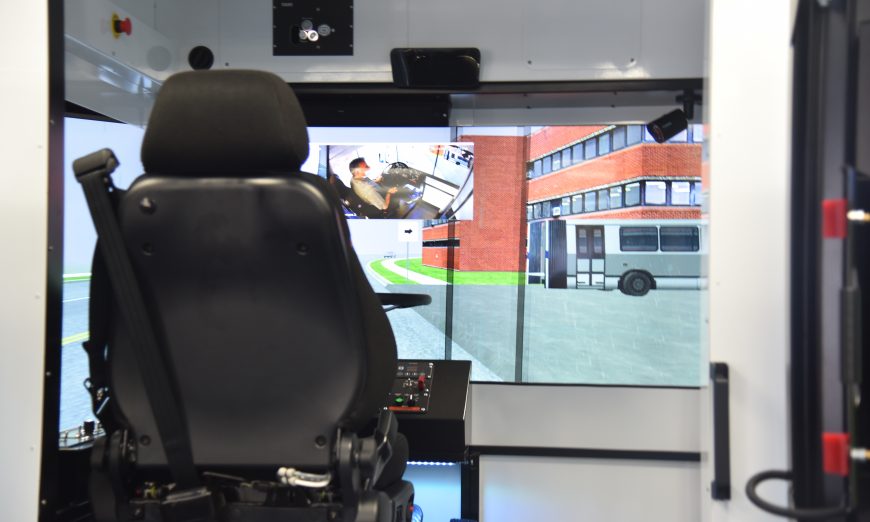The Santa Clara Valley Transit Authority (VTA) in partnership with Mission College in Santa Clara recently went high tech with the $460,000 purchase of a bus simulator training aid. The MB 2000 is reportedly the most cutting edge simulator used by any transit agency in the country, and, according to Rob Gamble, Director of Business and Workforce Development at Mission College, is designed to train drivers for situations that would be unsafe to train them for in any other way.
VTA’s partnership with Mission College started about five years ago when then-Governor Jerry Brown launched the California Apprenticeship Initiative to advance workforce training. VTA then joined with Mission College and the Joint Workforce Investment to create one of the only apprenticeship programs for transit in the country. The program allows students to be fully trained transit operators or mechanics while also earning a college degree.
Gamble said that the core need for the program stems from something called the “silver tsunami,” a phenomenon common at transit agencies nationwide in which more than half of the workforce retires en masse. So far, the program has had 254 graduates with another 70 to 80 currently in the program. The bus simulator was funded by a federal grant through VTA/Amalgamated Transit Union Joint Workforce Investment, and is now a key part of the training program.
“VTA always has a mentor with new drivers for the first couple weeks, which is different from other transit agencies,” said Gamble. “The federal grant allowed us to purchase the simulator, which allows them to go further like setting up a situation where’s there’s construction work leading to detours in the rain in the dark and allows drivers to respond.
“It’s not the mechanical skills of driving the bus, those things are taught,” continued Gamble. “It’s the decision making of what to do when all of these things come into play at once on a rainy day. The simulator allows them to teach decision making.”
The simulator is a physical bus cabin that takes the driver through a 340-degree virtual cityscape terrain. It can be programmed for various weather conditions, road surfaces, underpasses, pedestrians, cyclists and other conditions. The goal is to prepare coach operators for anything that they could encounter on the job thereby reducing collisions and supplements the actual field training offered by VTA. Students have the opportunity to learn without real-world consequences and improve their driving skills. The simulator will also help retrain experienced operators as technology changes. Gamble said that this will be even more crucial as buses become all-electric.
“It’s important to understand that this is an enhancement, not a replacement,” said Maurice Beard, VTA Technical Training Supervisor. “The look and feel of operating a coach is very real. The sight lines, mirrors, loading passengers, lift use, etc. They’re all there. But it cannot fully replace the learning our students get on the road.”
The simulator will be housed at VTA’s training facility at the Chaboya Yard in San Jose.








Thankyou so much for the coverage! Could you possibly correct our agency name? It’s the Santa Clara Valley Transportation Authority.